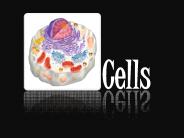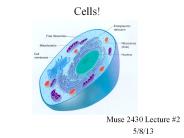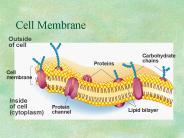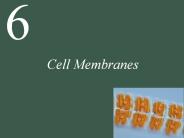T Cell Phagocytosis PowerPoint PPT Presentations
All Time
Recommended
Chap. 21 Stem Cells, Cell Asymmetry, and Cell Death Topics Cell Death and Its Regulation Goals Learn the basic mechanism of apoptosis and its regulation.
| PowerPoint PPT presentation | free to download
Normal cells have a fairly narrow range of function or steady state: Homeostasis ... Cytoplasmic vacuolization. Nuclear chromatin clumping. Ultrastructural changes ...
| PowerPoint PPT presentation | free to view
Cell Membrane, Cell Transport & Cell Division Chapter 7: Membrane Structure and Function Chapter 12: The Cell Cycle Plasma Membrane Plasma Membrane ...
| PowerPoint PPT presentation | free to download
In general, the T cell phagocytosis assay can be divided into two categories, in vivo and in vitro. Both of them are always based on fluorescence. In vivo assay has advantages to be more useful and credible, while in vitro phagocytosis assay could give insights during an early stage in a very short timeline.
| PowerPoint PPT presentation | free to download
Cell Membrane, Cell Transport & Cell Division Chapter 7: Membrane Structure and Function Chapter 12: The Cell Cycle Plasma Membrane Plasma Membrane ...
| PowerPoint PPT presentation | free to download
Chapter 7 Cell Structure: A Tour of the Cell
| PowerPoint PPT presentation | free to download
SC.912.L.14.2 How does something as thin as a cell wall or membrane protect a cell? Among the most important parts of a cell are its borders, which separate the cell ...
| PowerPoint PPT presentation | free to view
t cell mediated immunity (cell mediated immunity) * * * * * * * * * * * * * * * * * * * * * * * * * * * * * * * * * knowledge of cognate interaction improves vaccine ...
| PowerPoint PPT presentation | free to download
Fundamentals of Cell Biology Chapter 13: The Birth and Death of Cells Dr. Saeb Aliwaini *
| PowerPoint PPT presentation | free to view
property of biological membranes which allows some substances to pass more easily than others ... water moves into cell, causing it to swell; cells become more TURGID. ...
| PowerPoint PPT presentation | free to view
* * Movement from high concentration of that substance to ... Outside Plasma membrane Inside ... system Movement across the Cell Membrane ...
| PowerPoint PPT presentation | free to view
PATHOLOGY Lecture 1 Cell injury and cell death Causes of cell injury hypoxia = oxygen deprivation physical agents (temperature extremes, pressure, electric shock ...
| PowerPoint PPT presentation | free to view
Cell Injury, Cell Death, and Adaptations Richard D. Boucher, MD Clinical Medicine I Adjunct Faculty, SCCO Disorder Organ is normal but malfunction of the organ exists ...
| PowerPoint PPT presentation | free to view
Actin-dependent process allowing a cell to engulf and digest large particulate ... e.g. lamellocytes and encapsulation of parasitic wasp eggs. ...
| PowerPoint PPT presentation | free to view
Dr. Temur Ahsan Khan Cells and tissues undergo a number of responses according to intensity and duration of pathological conditions and injuries Cellular ...
| PowerPoint PPT presentation | free to download
Title: Cell Structure and Function The cell is the smallest unit of life that can carry out all the functions of a living thing. Author: keenea Last modified by
| PowerPoint PPT presentation | free to download
Chapter 4 An Introduction to Cells and Procaryotic Cell Structure and Function ...
| PowerPoint PPT presentation | free to download
... cells has a lower concentration of water than fresh water what happens if you ... is required movement is from high concentration to low concentration ...
| PowerPoint PPT presentation | free to view
Phagocytosis- Is the process by which large molecules are ingested by the cell ... Osmosis Is the movemet of water across the membrane from an area of High ...
| PowerPoint PPT presentation | free to view
Cell, cell cycle and origin of cancer Marina Marjanovic, Ph.D. Program Administrator, Strategic Initiative on Imaging Beckman Institute for Advanced Science and ...
| PowerPoint PPT presentation | free to view
PHAGOCYTOSIS Chapter 15 What is a Phagocyte? A cell that engulfs and digests material such as cell debris and microbes, including invading organisms.
| PowerPoint PPT presentation | free to download
Specific vs Non-specific Response Phagocytosis Phagocytosis and the role of lysosomes and lysosomal enzymes in the subsequent destruction of ingested pathogens.
| PowerPoint PPT presentation | free to download
These are the storage sacs of the cell membrane. Vesicles are smaller and are formed by pinocytosis (cell drinking) usually made by Golgi body or from infoldings ...
| PowerPoint PPT presentation | free to view
... channel Glucose molecules Active transport If a material ... the cell Two types: Phagocytosis ... Design Cell Membranes Cell Membrane Cell ...
| PowerPoint PPT presentation | free to download
... layers to serve as transporters to shuttle materials in and out of cells Receptor sites are inside cells and they are places ... lesser concentration to ... known ...
| PowerPoint PPT presentation | free to view
Cells Units of life- organisms can be single cells, colonies or multicellular Two basic types of cells prokaryote and eukaryote Prokaryote Bacteria and Archaea
| PowerPoint PPT presentation | free to download
CELLS The Smallest Unit of Life
| PowerPoint PPT presentation | free to view
Cells 1 Keratinizing epithelial cells 2 Wet stratified barrier epithelial cells 3 Exocrine secretory epithelial cells 4 Hormone secreting cells
| PowerPoint PPT presentation | free to view
Cells! Muse 2430 Lecture #2 5/8/13
| PowerPoint PPT presentation | free to download
Cells` The smallest functional unit of life
| PowerPoint PPT presentation | free to download
CELLS CELLULAR COMPONENTS & PROCESES MODERN CELL THEORY The cell is the unit of structure and function in living things. All cells arise from preexisting cells.
| PowerPoint PPT presentation | free to download
Cells Chapter 3 Mitotic phase (M): dividing phase Prophase Metaphase Anaphase Telophase IPMAT Interphase: G1 , S and G2 phases. (90% of its time) G1 (gap 1 ...
| PowerPoint PPT presentation | free to view
Title: BIO 156 CH 3 Cells Author: revie Last modified by: brewster Created Date: 5/21/2003 9:19:32 PM Document presentation format: On-screen Show Company
| PowerPoint PPT presentation | free to view
Structural and functional organization of cell
| PowerPoint PPT presentation | free to download
Movement Through Cell Boundaries Active and Passive Transport ... Phagocytosis Cell eating ... molecules through a membrane . Osmosis and Cell ...
| PowerPoint PPT presentation | free to view
Cell Membranes The Cell Membrane Cell Membrane: Phospholipid Molecule Model Membrane Structure Cell Membrane Every cell is encircled by a membrane and most cells ...
| PowerPoint PPT presentation | free to download
Cell Biology Bio 2.8 Cell structure and function Bacterial cells, protist cells, plant cells, animal cells Cell components and functions Microscopy
| PowerPoint PPT presentation | free to view
II. Cell Structure - Blackboard ... Cell Structure
| PowerPoint PPT presentation | free to view
Cell Membrane & Cell Transport
| PowerPoint PPT presentation | free to view
Cell Membrane Outside of cell Carbohydrate chains Proteins Cell membrane Inside of cell (cytoplasm) Protein channel Lipid bilayer
| PowerPoint PPT presentation | free to view
Chapter 7 Cell Structure & Function This process does not require E. It acts just as diffusion. It goes from high to low concentrations. Facilitated Diffusion http ...
| PowerPoint PPT presentation | free to view
Cell Membrane Outside of cell Carbohydrate chains Proteins Cell membrane Inside of cell (cytoplasm) Protein channel Lipid bilayer
| PowerPoint PPT presentation | free to view
Life: The Science of Biology, 10e - Slothnet ... Cell Membranes
| PowerPoint PPT presentation | free to download
Cell Structure & Function http://koning.ecsu.ctstateu.edu/cell/cell.html Cells walls are in plant cells not animal cells Inside the Cell Eukaryotic Cell Part I ...
| PowerPoint PPT presentation | free to view
Cell Transport Biology Quick Review What part of the cell controls what enters and exits the cell? THE CELL MEMBRANE! The Cell Membrane The cell membrane is ...
| PowerPoint PPT presentation | free to view
Cell Membrane Transport Solute Pumping to Maintain the Membrane Potential Pumps Transport proteins that use energy from ATP hydrolysis to transport specific molecules ...
| PowerPoint PPT presentation | free to download
The Cell Chapter 7.1, 7.3 Def. according to cell theory: All organisms are made of cells Basic unit of structure All cells come from preexisting cells Cytology: The ...
| PowerPoint PPT presentation | free to view
Cell Biology Achievement Standard 2.8 90464 Cells All living things are made up of 1 or more cells Cells vary in shape but they are always small Small size is due to ...
| PowerPoint PPT presentation | free to view
Cell Membrane & Cellular Transport
| PowerPoint PPT presentation | free to view
Introduction to Cells Eukaryotic Cells Prokarytoic Cells Introduction to Cells History Robert Hooke (1600 s) first described cells in thin sections of cork that he ...
| PowerPoint PPT presentation | free to download
Cell Boundaries Cell Membrane All cells are surrounded by a thin flexible barrier. It is the responsibility of the cell membrane to control what enters and leaves the ...
| PowerPoint PPT presentation | free to view
The Cell The stuff that has been boring you for years! (Brought to you by the people who make learning mandatory so that we can keep our jobs and have summer off!)
| PowerPoint PPT presentation | free to view
Cell Membrane Cell Membrane is very complex. It s made of phospholipid bilayer with proteins throughout. some proteins extend all the way through (Integral Proteins ...
| PowerPoint PPT presentation | free to download
























































